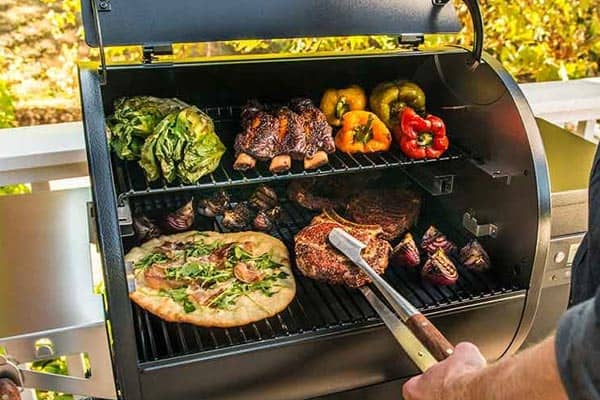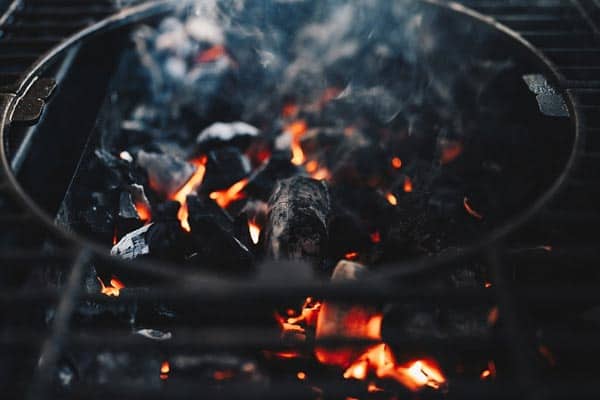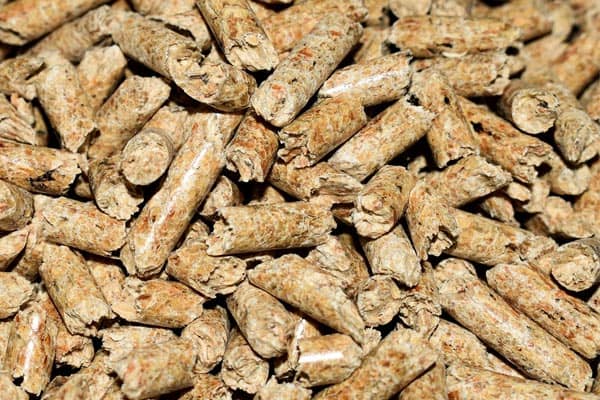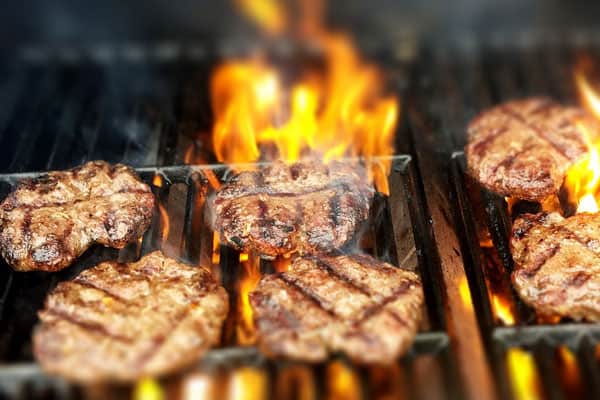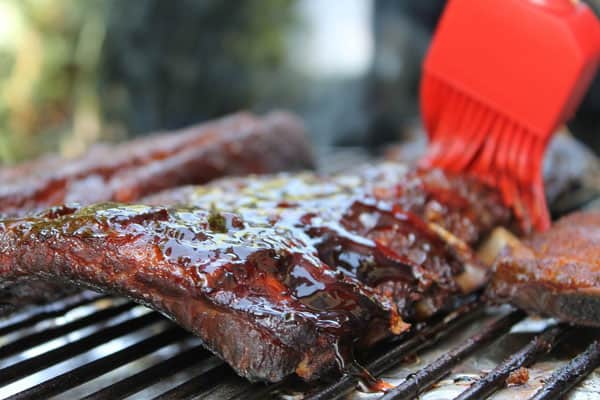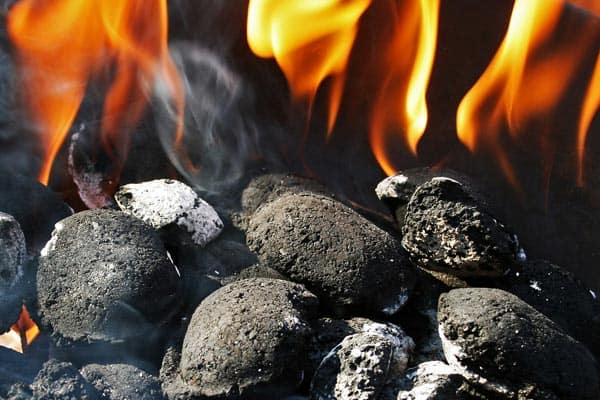6 Pellet Grills Pros and Cons
If you’re reading this post, the chances are that you’re considering to make a large investment in the form of a pellet grill because these types of grills aren’t cheap.
It makes sense to understand if it’ll be well worth it in the long run, and knowing the biggest pros and cons can help you make an informed decision.
Pellet grills have several pros and cons associated with them like they offer unmatched control, give you a huge range of flexibility, and they come in several sizes. However, they don’t do well in wet conditions, they’re expensive upfront, and the pellets can deteriorate. Despite this, they’re growing in popularity, and they have a long history attached to them that make them desirable.
What is a Pellet Grill?
A pellet grill is a type of grill that utilizes pellets as fuel, and these types of grills also require a generator or an outlet because they use electricity to run.
You load the pellets into the hopper on the grill to store them until you need them, and the hopper will load the pellets into the auger before moving them into the ignition chamber.
There is a part of the grill called the hot rod that will ignite the pellets once they get into the chamber to create heat and smoke to cook your food, and this makes pellet grills a very versatile piece of equipment that gives you the best heat control possible.
A lot of pellet grills come with the ability to roast, grill, bake, and smoke, but the majority of people use them to smoke their food.
There is an internal fan that will circulate the smoke and heat throughout the grill, and this mimics what happens in >a smoker or convection oven.
Your food stays away from the fire using a metal plate, and this prevents drippings or flare-ups from ruining your food’s flavor while it maintains a constant temperature.
What are Pellets?
Wood pellets are made from hardwood sawdust that gets compressed into tight tubes, and these pellets can add smoke flavor to your food.
They are around 99% efficient while producing very little quantities of ash, and they come to the correct temperature quickly and more reliably than wood. You should have very little to clean up when you finish using your pellet grill.
Food-grade pellets for a pellet grill typically come with a single type of hardwood, but you can get blends that allow you to choose which flavor profiles you want your smoke to produce.
Common wood pellets include maple, cherry, apple, oak, pecan, and hickory woods, and you can mix and match depending on what you want to cook.
You shouldn’t need a lot of pellets to burn for hours at a time, and you can seal the bag to store them between uses to retain the flavor.
Pellet Grill History
One of the biggest driving factors behind the popularity of the pellet grill was a patent that expired in 2006 because these grills were mostly confined to the competitive circuit before this time instead of being widely distributed.
Traeger grills are still a huge brand in this niche market, but other brands jumped on the opportunity to use Traeger technology to create their own versions of the pellet grills.
This turned the pellet grill market into a buyer’s market, and people suddenly had a host of options with versatile features at affordable prices.
Another large driver behind the popularity surge is the versatility that this grill offers because you don’t have to buy a grill and a separate smoker to meet your cooking needs.
A pellet grill can take care of both of these cooking methods in one device, and they come in a nice range of sizes to help fit any need you have.
Average Price Range for a Pellet Grill
Since pellet grills pull double-duty as a smoker and a griller, you can expect to pay more for one than you would a traditional grill or smoker. The beginner grills will cost around $300 for a lower-end model, with the average price being around $500.
High-end pellet grills can cost over $1,000, but they come with a lot of convenient electronic components that add to the versatility and help you justify the price point.
Now that you’re aware of the history of this grill, what it is, what it can do for you, and what pellets are, we’ll get into the biggest pros and cons associated with this type of grill. This will give you a good idea of whether or not this is the grill you want to invest in.
Pellet Grill Pros
1. Precise Temperature Control
You get very precise and consistent temperatures with this grill, and most of the grills come with actual temperature settings instead of a low-high heat gradation that allows you to set your temperature at 230-degrees and leave it to cook for hours.
The pellet grill will work to maintain this temperature within a 10-degree to 15-degree variance for the entire cooking process. As soon as the temperature starts to drop too low, the auger will automatically feed more pellets in to give it a boost.
Another bonus point with pellet grills in reference to temperature control is that most models come with digital temperature settings or probes that give you a very accurate reading of your meat’s internal temperature without having to open up the grill and lose the heat or smoke.
2. Ease of Use
Generally speaking, pellet grills have a very user-friendly design that makes them a favorite for novice grillers or people new to smoking meat. Getting your pellet grill ready to go only takes a few steps, including:
- Load your hopper full of the pellet of your choice.
- Plug your grill into a nearby outlet or hook up an extension cord.
- Turn your grill on and set your perfect temperature.
Once you follow these three steps, all you’ll have to do is wait until the grill heats up to your desired temperature, and this can take between 15 to 30 minutes. When it hits the correct temperature, load your food in, close the door, and let it cook until it reaches the doneness level you want.
3. Fewer Messes
Grilling can be very messy and a hassle to clean up, but the wood pellets these types of grills use are a very efficient fuel source that only produces around 1/2-cup of ash for every 40 pounds of pellets it burns.
Your cleaning process is very minimal, and some pellet grills come with a system in place to automatically remove the ash without taking the whole grill apart or vacuuming it out.
4. Highly Versatile
Pellet grills have a reputation as being an all-in-one product with a temperature range that starts around 175-degrees and goes up over 450-degrees, and this allows you to grill on high heat or cooks low and slow to smoke your food.
Because pellet grills have a high-temperature precision rate coupled with a convection oven design, they allow you to add a slight smokey flavoring to your food. You can use it with veggies, meat, side dishes, and even desserts like cookies.
5. Infuses Hints of Smokey Flavors
Cooking with electric smokers allows you to set it and forget it until the timer goes off, but they fall short in one major category when you compare them to pellet grills.
Electric grills only put out a small amount of smoke, and the meat ends up without a smoke ring. A pellet grill is capable of giving you a much more distinct smokey flavoring with a smoke ring.
Wood pellets come in several different styles, and this allows you to mix and match flavors to suit whatever you want to cook.
Even when you grill on high heat with your pellet grill, the wood chips will give you a much more smokey flavoring, and some grills even offer a high smoke setting.
6. Recent Popularity Boost and Community Growth
Pellet grills have really caught on in recent years as a versatile grill choice because the availability went up with dozens of brands creating and selling them.
You can pick them up at your local outdoor store, and you can shop online and have them delivered right to your door. You can find entire websites that do nothing but collect recipes for pellet grills, and there are also YouTube channels and Facebook groups.
No matter if you’re having a technical issue with your grill or looking for a recipe, plugging it into Google will get you a result.
More marketing, popularity, and competition all mean that pellet grill manufacturing is in the spotlight. Companies are competing to work out any issues with their grill’s designs while adding new features, and this creates a buyer’s market.
Pellet Grill Cons
1. Inadequate Searing Temperatures
Many people believe that the perfect searing temperature for a steak is at 750-degrees, and most pellet grills can’t touch this heat because their hottest temperatures tap out at 500-degrees.
You can get pellet grills with a sear plate or box that will get up to the 750-degree mark to sear, but you’ll most likely have to add propane to the mix. For steak aficionados, this may not be acceptable because it’s expensive and time-consuming.
2. Heavier Design and Less Portable
Pellet grills are a far cry from your typical camping grill, and it has a very heavy and large design that simply isn’t portable.
You also need a power source like a generator or an electrical outlet close by to run the grill, and they can be complicated to assemble and disassemble. You have to set it up on your patio or in your backyard and leave it be.
3. Doesn’t Impart a Large Smokey Flavor
When you compare the flavors the wood pellets give your food, you won’t get as powerful or an as immediate smokey taste as you would get with a wood and charcoal blend or true wood fire.
However, they give you more smokey flavoring than you’d get with an electric grill, so consider you smoke levels to be around beginner or intermediate. This makes it almost impossible for you to smoke your food too much as you can with wood fires.
4. Doesn’t Work Well in Wet Conditions
You can get away with working in wet conditions with a charcoal or wood grill, but water and electricity don’t mix.
Any moisture from rain or high humidity levels can make your wood pellets swell, and the pellets can then crumble and turn into sawdust. They can also jam your auger and cause your grill to shut down because they’re too large to pass through.
5. Potential for Burn Backs
A burn back is a rare but very serious problem with using pellet grills improperly, and a burn back happens when the pellets in the auger ignite from the flame and heat of the pellets in the firepot.
The fire starts in the auger and spreads backward up the auger until it hits the hopper where you have all of your pellets, and it can easily ignite them all. You can’t do anything to prevent it from happening ahead of time, and you have to think fast to put it out when it happens.
6. Price
Even the lower-end pellet grills fall into the $300 range, and you want something that is going to last for years after you get it. You could easily end up spending $500 or more on this grill, and it can be hard to justify this price point for a single cooking device.
The size of the grill, how reliable it is, the durability, and the brand will all factor into the final price point, and you can easily blow your budget when you start buying add-ons.
